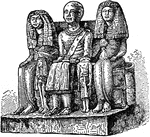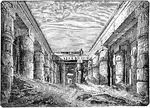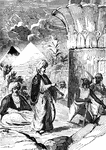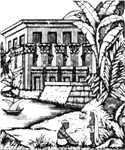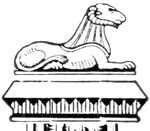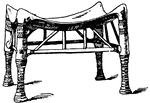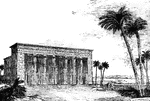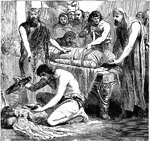
Process of Embalming
"When an Egyptian died the friends of the deceased went at once to the embalmer, By him they were shown…

Egyptian Folding-Chair
The Egyptian Folding-Chair in the 18th dynasty was found in the tomb of Chambali. This Folding-chair…

Racial Types From Egyptian Paintings
Early developments of racial types, a tomb paint from an Egyptian tomb.

Egyptian God, Typhon
Typhon was he wife of Anubis, God of Darkness. Typhon is also known as the Terrible One.

Obelisk of Heliopolis
A 68-foot stone pillar located at Al-Matariyyah part of Heliopolis. It is considered to be the earlier…

Egyptian Hunting Party
"The hunting scenes are very numerous among their paintings, and the devices for capturing birds and…

Judgment of the Dead
An illustration of an Egyptian hieroglyphic depicting the judgment of the dead. "An ape-assessor scourages…
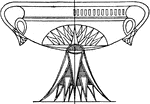
Egyptian Krater
The Egyptian Krater is an antique vase that has a lotus cup design. Typically used for mixing water…

Egyptian Krater from Thebes
This Egyptian Krater is an antique vase that was found in Thebes, Ancient Egypt during the eighteenth…
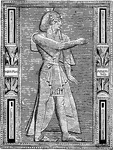
Menepta
Also known as Merneptah. He ruled Egypt as pharaoh for ten years, and was the thirteenth son of Ramessess…
Column of Osiris
A column depicting the Egyptian god Osiris. Osiris is usually affiliated with the Afterlife, the underworld…
Egyptian Phiale
The Egyptian phiale with cover is a slender vessel without handles. It has an elongated body with a…

Egyptians Plowing
From a Bas-Relief of the Oldest Dynasty, Memphis. Depicts two men plowing with two oxen.

Ramses the Great
Also known as Ramses II. A profile portrait of Ramses the Great with carvings behind his head. He is…
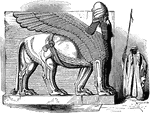
Shedu
The Shedu is a celestial being from Mesopotamian mythology. He is a human above the waist and a bull…
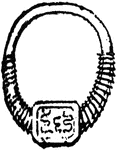
Signet Ring
"A signet ring has a square revolving bezel on which are four serpents interlaced." —The Encyclopedia…
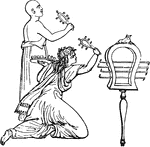
Sistrum
"The sistrum was an Egyptian instrument of music, used in certain ceremonies by that people, and especially…

Sphinx
"Sphinx is a Greek word signifying 'strangler,' applied to certain symbolical forms of Egyptian origin,…
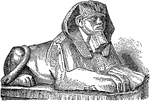
Sphinx
A Sphinx is a zoomorphic mythological figure which is depicted as a recumbent lion with a human head.

Crouching Sphinx
The Crouching Sphinx is a combination of the human bust with the body of the Lion. The Sphinx is an…

Crouching Ram Head Sphinx
This Crouching Ram Head Sphinx has a head of a ram and the body of a lion. An Egyptian invention, it…

Egyptian statue
"Egyptian Statue in black basalt. Heroic size, in the British Museum." —D'Anvers, 1895
Column from the Temple of Denderah, with Hathor Masks, Time of Cesar
Column located in the Temple of Denderah, with masks of Hathor, an Egyptian sky goddess of love and…
